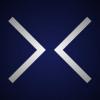-
Posts
2,400 -
Joined
-
Last visited
-
Days Won
95
Everything posted by Digital_Igloo
-
I design gear and manage existing (and yet unreleased) products for Line 6. :)
-
Haaaha! Wow. Filters gone wild. Thanks for the input, guys. Keep 'em coming!
-
Hi Guys—a few questions if you don't mind: 1. When performing, how do you select tones? A. One preset per song, turning blocks on and off as needed from assigned footswitches B. One to four presets per song, switching between A, B, C, and D in the same bank, and then switching banks for a new song C. One to four presets for the entire set, and A, B, C, and D represent four primary tones (example: clean, overdrive, high gain, solo lead) D. Several presets, laid out randomly across multiple banks E. One or more presets, but block bypass and/or preset selection is accomplished remotely from a computer, via MIDI, by an off-stage technician, etc. F. Other (please explain) 2. Which one of the following best represents preset management before a gig? A. I may rearrange presets to accommodate the set's song order B. Little to no management; preset order is independent of the set's song order C. I do have a method to my preset management, but it's not tied to song order (please explain) 3. How (if at all) do you use Setlists? A. Different order of the same presets from a different Setlist B. Different types of presets—Clean, dirty, effected, etc. C. I pretty much stay within the same Setlist of 64 presets D. Other (please explain) Thanks!
-
Cheers, Dean! Full disclosure—Line 6 is owned by Yamaha, which means we're now part of a publicly traded company. There are all sorts of new rules governing what we can and can't say on a public forum. Chris, Cliff, and others are in the fortunate situation where they can be as open and transparent as they like. Line 6 legally cannot. Instead, we rely on IdeaScale, extensive email surveys, ridiculous amounts of forum lurking, and one-on-one visits with everyone from kids starting out on guitar to world-touring rock stars.
-
Correct. Thanks, Phil. :) It's not that it's impossible to add IR support to POD HD; just that user or third-party IRs can't be quickly or easily processed in such a way that they'd use the same amount of DSP as our stock cabs. We also have to understand the impact of supporting a new type of block that may use over half of a tone's DSP (at the expense of amp blocks, effects blocks, and dual paths). It's not just a technical issue—it's also a usability issue.
-
There should be no issue with disabling POD HD's cabs and running it into products like the Torpedo C.A.B. or Logidy EPSi. In fact, I've used third-party cabs in Logic's SpaceDesigner (and others) many times with great results.
-
Zero. However, it would require a significant rewrite to the entire system architecture, because as I understand it (I'm not an embedded firmware engineer), it deals with the method in which the MCU and DSP communicate. So I'm not saying "it ain't gonna happen", but it's not nearly as easy as some think.
-
I wasn't around for the initial HD cab listening tests, but from what I gather, any optimization and filtering has negligible sonic impact on the resultant tone. "Optimization and filtering" doesn't imply any sort of sonic maximizing or EQ. The point is that an HD cab block can't simply be replaced with a user or third-party IR.
-
Selecting "No Cab" in POD HD500/X completely bypasses it. Make sure the output mode is set correctly, however. For FRFR use, Studio/Direct will likely provide the most satisfying results, but as always, trust your ears. The HD's cabs are indeed based on convolution, but we didn't just slap an XXX-point IR in there. There's a lot of clever tweaking, filtering, and optimization to get the most out of our cabs (perhaps akin to what Cliff does with AxeFX II's Ultra Res IRs—within the confines of HD—but I'm not sure), and unfortunately, there's no easy way to apply the same process to third-party or user IRs. Hence, there's no way for third-party IRs to take up the same DSP resources as the stock cabs.
-
Haven't done the math (much less a conversation with engineers to confirm), but a rough guess would be a 512-point IR is the ideal size for that particular scenario. Thanks!
-
What's the desired sample length for a light version IR? What's the desired sample length for the highest resolution IR? Currently, sample truncation for IR playback in hardware ranges from 256 (Digitech GSP1101 with 3rd-party firmware) to over 65,000 samples (Logidy EPSi in cab mode). The Two Notes C.A.B. truncates user IRs at around 900 samples and IIRC, Fractal started out at 512, and now truncate at 1024 (normal res), 2048 (high res), or 8000 (ultra-high res). Again, a single mono 2048-sample IR may eat up more than half of HD500X's DSP, as it uses a different type of technology as the Logidy.
-
That's like saying Apple repackaged their old stuff and called it an iPhone. ;) Okay, maybe not, but there's a lot more to the promise of AMPLIFi than its POD Farm 2.5 modeling engine.
-
No. Line 6 has chosen (and continues to choose) open, dynamic block assignment for its flagship modelers. There will always be situations where, depending on the types of models assigned, DSP limits are reached. Alternatively, more than one—likely several—of the following scenarios would need to take place: • Remove half the block locations so the user can fill each one with pitch shifters or spring reverbs • Limit the user to only one of each type of effect • Remove the more DSP-intensive models entirely • Use a less DSP-intensive modeling architecture, or limit the quality of the more DSP-intensive models • Remove parallel signal paths • Restrict the order in which blocks can exist • Remove non-model features that also take up DSP, such as input routing, output routing, Variax VDI, L6 LINK, USB audio, the Looper, etc. • Charge a lot more for multiple processors and the cost of developing for multiple processors • Charge a LOT more for Tiger Sharc processors and the cost of developing for Tiger Sharc processors If one is still more concerned with the occasional DSP Overload message than with the items above, AMPLIFi FX100, POD HD300, and POD HD400 all utilize fixed block assignment. HD500X and HD ProX were opportunities to incrementally improve on the already immensely successful POD HD platform. They were never a "oh no, we need to do this"; they were a "this is cool—why don't we do this?"
-
No one? Our research has told us the only people who care about IRs are a small subset of people on forums. Could it be that even they don't care about IRs? Or they simply don't care about sample length?
-
Already posted this on IdeaScale, but let's try it here too: What is everyone currently using for IRs? Note that software allows for much longer impulses than existing hardware solutions. One cab emulator pedal truncates third-party IRs to around 900 samples; another truncates at over 65,000. Several third-party IR libraries are at 1024. The unofficial GSP1101 firmware truncates IRs to only 128 samples (!). So yeah, they're ALL over the map. A 2048 sample IR may very well eat up more than half of the DSP (it's nowhere near a block or two), so it's important to understand (for us and others) where the ideal compromise in sample length lies.
-
This is the critical comment here. Many of us at Line 6 obsess over workflow, and M13 and HD500/X are very, very different beasts in this regard.
-

How to monitor POD HD500X output signal level?
Digital_Igloo replied to TylerSocholotuik's topic in POD HD
The XLR outputs on POD HD500X are mic level—that is, they're designed to be sent long distances (without the need for additional DI boxes) to the front-of-house mixer and then boosted with mic preamps. The 1/4" outputs are line level, which is much higher. If you're running directly into studio monitors, definitely use the 1/4" outputs.- 11 replies
-
- 1
-

-
There's a trick: 1. On the Setup > MIDI page, set MIDI Out/Thru to "OUT" 2. Run a (preferably short) MIDI cable from HD500/500X's MIDI OUT back to its MIDI IN 3. On the MIDI Assign page, from the desired footswitch, set: • MIDI CH to "Base" • Message to "Bank Change" • Bank # to the desired Setlist: Bank #000 is Setlist 1, Bank #001 is Setlist 2, Bank #002 is Setlist 3, and so on 4. From that particular preset, step on the footswitch. POD HD500/500X will jump to the specified Setlist Of course, this implies that you must program the desired setlist into each and every preset from which you may want to access it. Alternatively, you can create a "Bank Jump" preset (at, say, 01A in every Setlist), with Footswitches 1-8 assigned to select Setlists 1-8.
-
Yes.
-
There will not be a "POD HD600X" ;) AMPLIFi is not a replacement for POD HD500X or POD HD Pro X, although its workflow is very different, so it may fulfill the needs of people who may have previously been looking at HD500X. The PODs are still our flagship processors.
-
Even if modeling was 100% perfect (that is, not one golden-ear professional could ever double-blind differentiate between real and modeled with regard to both feel and tone), perception bias and the placebo effect would still be very strong nuts to crack. So no, everyone still wouldn't be using it everywhere.
-

Ot: Amplifi 150 Is Guitar Player Editors Pick...
Digital_Igloo replied to smrybacki's topic in POD HD
Perhaps, but I haven't seen too many tube amps in living rooms, streaming MP3s all day. Admittedly, it's difficult to compare AMPLIFi to other amps, because its approach to how and where people play guitar (and ideally, how often they play guitar) is unique by design. -

Connecting Hd500x To Dt25 And Mac/powered Monitors At Same Time?
Digital_Igloo replied to GazzaBloom's topic in POD HD
Unfortunately, POD HD500X cannot send S/PDIF and L6 LINK simultaneously. When the DT25 is turned on, it tells POD to send digital audio via L6 LINK instead of S/PDIF. -
You could of course use your Crybaby as a wah pedal into the guitar in. Or if you prefer to place it anywhere in the signal chain, use the HD's FX loop. Personally, I use EXP 2 with a Mission Engineering EP-1L6 to tweak five or six parameters at a time. It's bugnuts fun to crank the tape delay feedback, drop the delay time, boost the reverb depth, bring in a bit of the sub bass, and nudge the fuzz up a bit—all at once.

